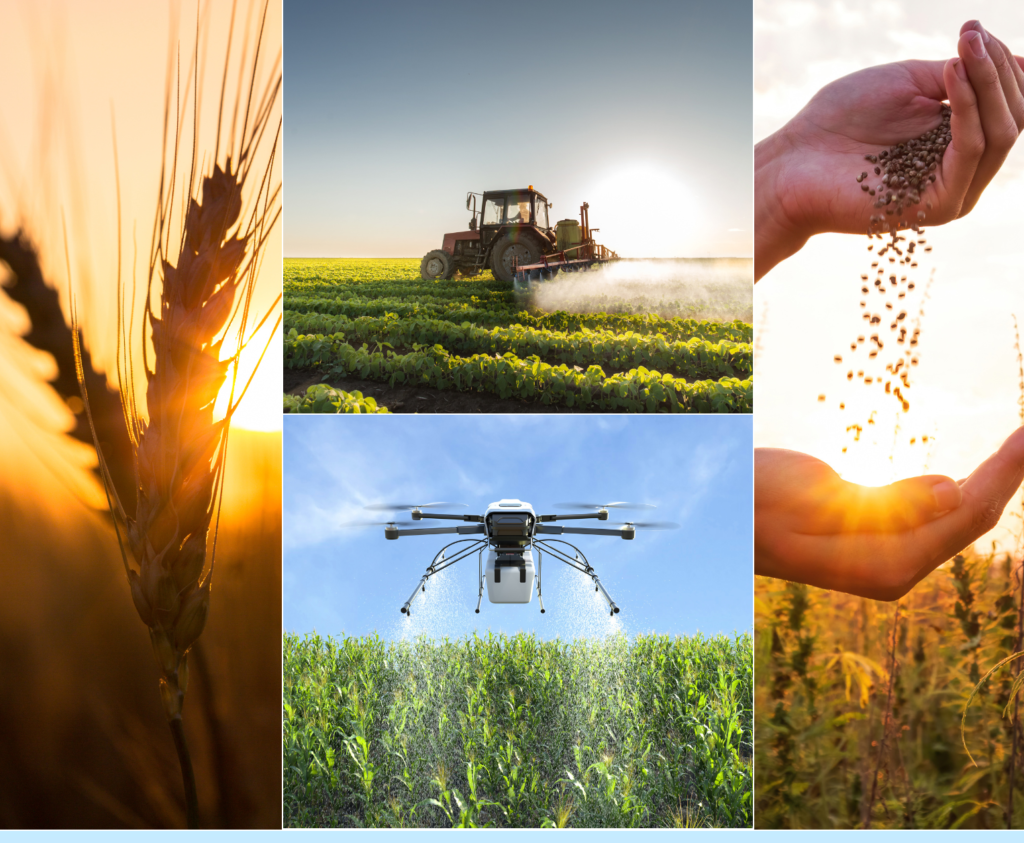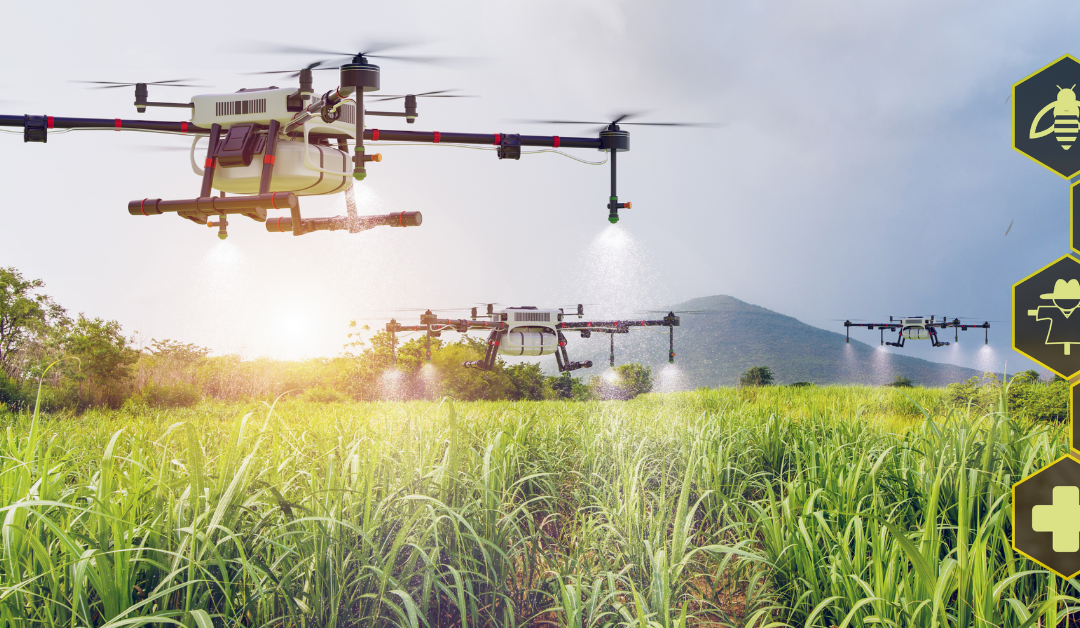Nowadays automation techniques are revolutionizing every field of technology. Automation in agriculture is transforming the way we approach farming, making processes more efficient, precise, and sustainable. With the rapid advancement of technology, various automation techniques are now being integrated into agricultural practices, from planting and irrigation to harvesting and crop monitoring. These innovations are not only enhancing productivity but also helping farmers reduce labor costs, optimize resource usage, and improve crop yields. As the agricultural industry continues to embrace these cutting-edge solutions, the future of farming looks increasingly driven by automation and smart technologies, promising a more sustainable and efficient food production system.
By the end of 2050 the world population is expected to reach 9.1 billion as stated by FAO (World Food and Agriculture Organization) and to feed this population food production should be increased by at least 70%.
To produce this much crop yield, only manpower would not be sufficient; thus, to cover that gap, new automated and robotic processes are essential. These advancements in agricultural technology will streamline operations, enhance efficiency, and maximize output, allowing farmers to meet the growing demand for food while minimizing environmental impacts.
Possible Future Management Process for A Modern Farm

Image Alt + text: Schematic of a possible future management process for a modern farm
The Rise of Automation in Agriculture
The integration of robotics and AI-driven technologies has revolutionized the way farming is done. Automation in agriculture allows farmers to optimize resources, monitor crop health, and manage farms with minimal human intervention.
Key Technologies in Automation in Agriculture
1. Crop Dusting Drones
Drones are increasingly used for crop dusting, offering precision and efficiency in pesticide and fertilizer application. Drones and precision agriculture help reduce wastage and improve crop protection.
2. Precision Agriculture Drones
Precision agriculture drones collect real-time data on soil conditions, crop health, and moisture levels, allowing farmers to make data-driven decisions.
3. UAV Precision Agriculture
UAV precision agriculture enhances field monitoring and analysis, helping in early detection of diseases and pest infestations.
4. Automated Irrigation System
An automated irrigation system ensures optimal water distribution, reducing water wastage and improving crop yields.
5. Farm Automation and Robotics in Agriculture
Farm automation involves the use of robotics for planting, harvesting, and sorting crops. Robotics in agriculture is reducing labor costs while improving efficiency.
Advanced Agricultural Technologies
1. Vertical Farming Automation
Vertical farming automation is changing urban agriculture by enabling year-round farming with minimal space and water usage.
2. Smart Greenhouses
Smart greenhouses use IoT and AI to control temperature, humidity, and light, creating ideal conditions for crop growth.
3. Self-Driving Tractors
Self-driving tractors automate plowing and planting, reducing the need for human labor in large-scale farming operations.
4. Automated Farming Equipment
Automated farming equipment such as robotic weeders and AI-powered harvesters increase productivity while minimizing manual labor.

Economic Impact of Automation in Agriculture
1. In the Farming Industry Why Is the Cost of Labor Increasing?
With rising labor costs, automation in agriculture provides an effective solution by reducing dependence on manual labor.
2. Supply Chain Digitalization
Supply chain digitalization streamlines logistics, ensuring that farm products reach markets efficiently.
3. Farm Record Keeping Software
Farm record keeping software helps farmers track expenses, manage resources, and make informed financial decisions.
4. Wearable Tech in Agriculture
Wearable tech is enhancing farm management by providing real-time data on livestock health and environmental conditions.
Post-Harvest Automation
1. Post-Harvest Processing
Post-harvest automation ensures efficient sorting, packaging, and storage of farm produce, reducing spoilage.
2. Modern Farming Techniques
Modern farming incorporates AI, machine learning, and robotics to maximize productivity and sustainability.
Future of Automation in Agriculture
The future of automation in agriculture looks promising with continued advancements in AI and IoT-driven technologies. As the demand for sustainable farming grows, automation in agriculture will play a crucial role in meeting global food needs.
Cultivating the Future: A Critical Look at Automation in Agriculture
The integration of automation into agriculture is a pivotal innovation, reshaping how we cultivate, harvest, and manage crops. Techniques like precision farming, robotics, and IoT-based monitoring have revolutionized traditional methods, addressing challenges such as labor shortages and inefficiencies in resource management. However, as with any transformative technology, the adoption of automation in agriculture presents both opportunities and challenges.
One of the most promising techniques is robotic harvesting, which enhances efficiency and reduces dependence on manual labor. Robots equipped with AI and machine vision can differentiate between ripe and unripe fruits, ensuring higher quality yields. Similarly, drones for crop monitoring provide farmers with real-time data on crop health, irrigation levels, and pest infestations. This reduces costs and minimizes environmental impact by enabling targeted interventions. Furthermore, automated irrigation systems powered by IoT sensors optimize water usage, a critical factor in combating water scarcity.
In conclusion, automation techniques in agriculture hold immense potential to transform the sector into one that is more efficient, sustainable, and resilient.
“The future belongs to those who prepare for it today.” – Malcolm X
This optimism underscores the importance of embracing technology as a tool for progress, while preparing society to adapt to the inevitable changes it brings.
FAQs
Q1: What are the benefits of automation in agriculture?
A: Automation in agriculture improves efficiency, reduces labor costs, and enhances crop yield through precision farming.
Q2: How does AI contribute to automation in agriculture?
A: AI-powered automation in agriculture enables real-time data analysis, predictive maintenance, and smart decision-making.
Q3: What is the role of robotics in agriculture?
A: Robotics in agriculture automates tasks like harvesting, sorting, and monitoring, reducing human intervention.
Q4: How is Devomech Solutions involved in automation in agriculture?
A: Devomech Solutions provides innovative automation in agriculture technologies, including robotics, AI-driven monitoring systems, and precision farming tools.

